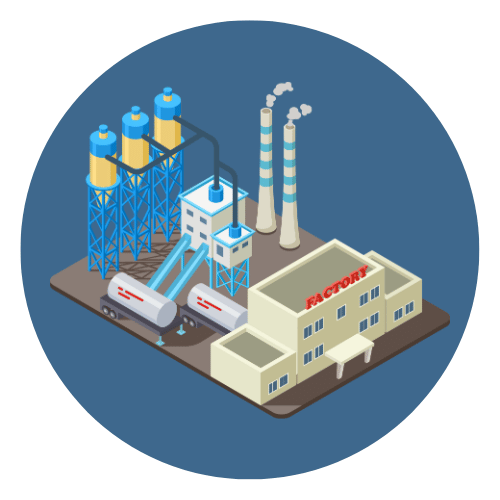VI. Maintenance and Lifespan of Axial Bearings

Axial bearings, like all mechanical components, require proper maintenance to ensure optimal performance and extend their lifespan. The lifespan of an axial bearing depends on several factors, including load conditions, operating environment, maintenance practices, and the quality of the bearing itself. Proper care can help prevent premature wear, reduce the risk of failure, and increase the bearing’s service life.
1. Importance of Regular Inspection
Regular inspection of axial bearings is crucial to detect signs of wear, misalignment, or lubrication issues early. This can prevent unexpected breakdowns and ensure the bearing continues to perform effectively under the required load conditions. During inspections, key components such as the rolling elements, raceways, and cages should be carefully checked for signs of:
- Wear: Look for surface damage, spalling, or pitting on the rolling elements and raceways.
- Corrosion: Rust or other corrosive damage can weaken the bearing material.
- Misalignment: Misaligned bearings can cause uneven wear and shorten bearing life.
- Lubricant condition: Proper lubrication is essential for reducing friction and preventing overheating.
2. Lubrication Practices
Proper lubrication is one of the most critical factors in extending the lifespan of axial bearings. Lubrication reduces friction between the rolling elements and raceways, minimizes wear, and helps dissipate heat generated during operation.
- Grease or Oil Lubrication: Most axial bearings require either grease or oil lubrication. The choice depends on the speed, load, and operating environment. Grease provides long-lasting lubrication and is generally easier to manage, while oil is used in high-speed or high-temperature applications.
- Lubrication Frequency: Bearings must be lubricated at appropriate intervals. Over-lubrication can lead to overheating, while under-lubrication can cause excessive wear. Manufacturers typically provide recommendations for lubrication schedules based on the bearing type and operating conditions.
- Condition of Lubricant: It’s important to monitor the condition of the lubricant. Contaminants such as dust, water, or debris can reduce the effectiveness of lubrication, leading to premature bearing failure.
3. Alignment and Load Management
Ensuring proper alignment is essential for maximizing the lifespan of axial bearings. Misaligned bearings are subject to uneven load distribution, leading to premature wear of the rolling elements and raceways. This is particularly important for axial bearings that are sensitive to alignment, such as thrust ball bearings.
- Correct Load Application: Bearings should be used within their specified load capacity. Overloading can cause deformation of the rolling elements or raceways, while underloading may result in slippage and increased wear.
4. Common Wear Issues and Signs of Failure
Over time, axial bearings will naturally experience wear, especially in demanding applications. However, certain signs can indicate that a bearing is approaching the end of its service life or may need maintenance:
- Unusual Noise: Grinding, squeaking, or rattling noises may indicate that the bearing is worn or improperly lubricated.
- Vibration: Increased vibration levels can be a sign of misalignment, wear, or inadequate lubrication.
- Excessive Heat: If a bearing becomes too hot during operation, it may be due to excessive friction, improper lubrication, or overloading.
- Discoloration: Darkening or discoloration of the bearing surfaces can be a sign of overheating or corrosion.
If any of these signs are observed, immediate maintenance should be performed to prevent further damage or complete bearing failure.
5. Extending the Lifespan of Axial Bearings
To ensure the longest possible service life for axial bearings, follow these best practices:
- Select the Right Bearing: Ensure the bearing chosen is appropriate for the load, speed, and environmental conditions of the application. High-quality bearings designed for specific tasks will generally last longer.
- Maintain Proper Lubrication: Follow the manufacturer’s lubrication guidelines and ensure the lubricant remains clean and free of contaminants.
- Ensure Proper Alignment: Misalignment can cause uneven load distribution and accelerate wear. Regularly check and correct alignment issues.
- Avoid Overloading: Operate the bearing within its specified load limits to prevent deformation and early wear.
- Monitor Operating Conditions: Regularly check the temperature, noise, and vibration levels to catch any potential issues early.
6. Expected Lifespan
The lifespan of an axial bearing can vary significantly depending on its type, application, and maintenance. Bearings used in well-maintained systems with proper lubrication and alignment can last for many years, while those exposed to extreme conditions or neglected may fail much sooner. Manufacturers often provide an estimated lifespan for bearings under normal operating conditions, typically measured in hours or revolutions.
Axial bearings, when properly maintained, can provide long-term, reliable performance in a variety of applications. Regular inspections, proper lubrication, and careful load management are key to extending the bearing’s service life and ensuring smooth operation. By following these maintenance guidelines, users can minimize downtime, reduce replacement costs, and maximize the efficiency of their machinery.



 Automation System
Automation System  Energy Engineeing
Energy Engineeing  Instrumentation System
Instrumentation System  Mechanical Engineering
Mechanical Engineering  Piping Technologies
Piping Technologies  Transportations
Transportations  Manufacturing
Manufacturing  Training Material
Training Material 















